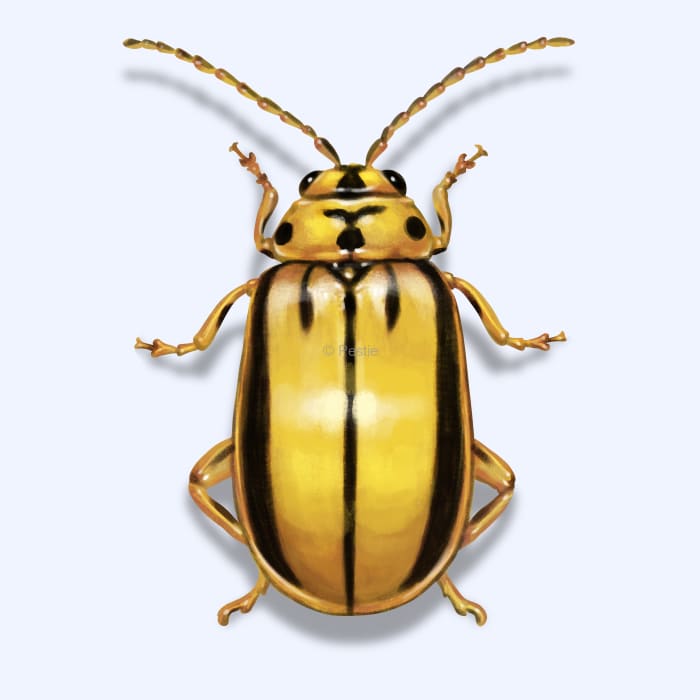How to identify and get rid of elm leaf beetles

Protect your elm trees from beetle damage
Are your beloved elm trees looking a little rough? Or have you been seeing small yellow and black beetles randomly in your home? You may be dealing with elm leaf beetles!
These small, yellow-green beetles are more than just a nuisance—they can cause serious damage to your trees if their numbers get out of control. Elm leaf beetles have a short life cycle, but they’re prolific breeders, and both the adults and larvae feed on the leaves, leaving your trees looking tattered and weak.
Elm leaf beetles are most active in the spring and summer when they emerge to feed and lay eggs on elm trees. The larvae hatch and begin feeding immediately, causing the most damage during this stage. During colder months, elm leaf beetles may try to sneak into your home to find some shelter over the winter.
How to identify elm leaf beetles
Elm leaf beetles are yellow to green beetles, with two stripes going down the outside of their back and one thinner one down the middle. The head also has a spot on top, and the thorax has two spots.
The larvae look almost like caterpillars and go from black to yellow as they grow.
Look for signs of problems on the leaves of elm trees. Elm leaf beetles feed exclusively on elm trees, and you can see the damage, which appears as small, ragged holes or skeletonized leaves where only the veins remain.
How big are elm leaf beetles?
Elm leaf beetles are small, typically around 1/4 inch long.
Where do elm leaf beetles live?
They are abundant where elm trees naturally occur. They were accidentally introduced into North America and have spread to most of the continent.
How to get rid of elm leaf beetles
Keeping elm leaf beetles out of your trees can be tricky, but it mostly entails pruning and destroying heavily infested trees, encouraging natural predators, and keeping your yard tidy of any fallen leaves.
To prevent elm leaf beetles from getting into your home, consider these steps:
- Repair screens on doors and windows
- Seal cracks and gaps around the home
- Vacuum up any intruders
- Start your bug barrier – with a DIY subscription plan just like the one Pestie offers!
Luckily, elm leaf beetles can’t reproduce indoors and don’t do any damage to your furniture or home.
Treat elm leaf beetles with Pestie
If you're still having trouble keeping elm leaf beetles away, the best option is to use a pro-grade, effective pest control solution like Pestie.
Pestie is a do-it-yourself pest control solution that's specially designed to keep elm leaf beetles and other pests away from your home.
With Pestie, you can rest easy knowing that your living space is protected and free of creepy crawlies. And the best part? It's designed for people, pets, and the planet, so you can say goodbye to harsh chemicals and hello to peace of mind!
- Save hundreds compared to traditional annual pest plans
- People, pet, and planet-friendly
- Pro-grade customized formulas
Quick facts
- Scientific name
Xanthogaleruca Luteola
- Colors
Yellow-green
- Life span
1-3 months
- Diet
Elm leaves
How dangerous are Elm Leaf Beetles?
Low danger risk
Elm leaf beetles don’t bite or directly threaten humans, but they can cause significant damage to elm trees if not controlled.
When elm leaf beetles lay their eggs on elm trees, the elm tree can detect the chemicals on the eggs. The tree then sends out plant odors that call for a parasitic wasp. The parasitic wasp smells the plant odors and then lays its eggs inside the elm leaf beetle egg.








